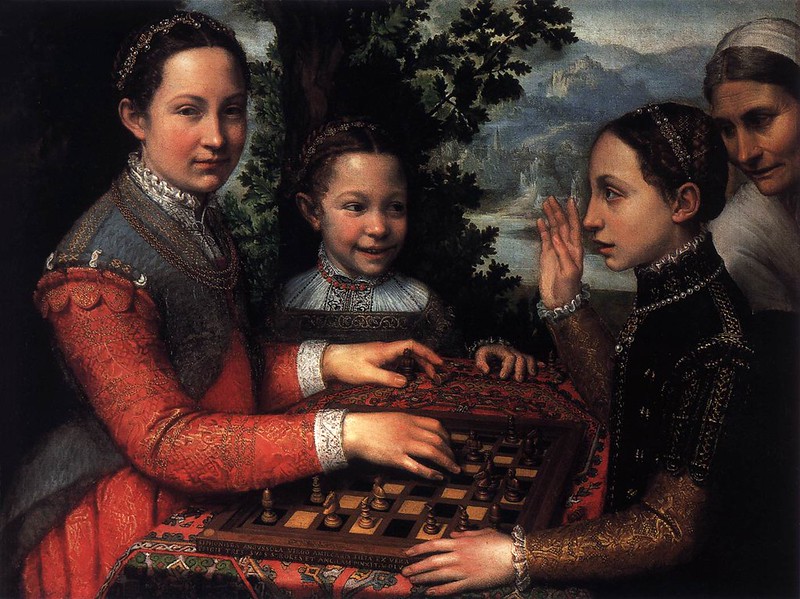The question of whether women should serve in the armed forces – and more specifically in active combat – is a topic of debate as ancient as warfare itself. While we may think the discussion is the result of contemporary feminism and activism, abundant historical evidence shows that women have commanded military units and female fighters have been on the battlefield since written records began, and we can safely presume before that as well.
Female Warriors of the Ancient World
History teaches us that women’s role in the armed forces has varied from culture to culture. Contemporary archeological research continues to provide increasingly detailed insights into the roles of women in war through the ages, whether as commanders and strategists, or active participants in warfare as fighters or spies. From ancient Egypt to the legendary Amazons, to medieval warrior queens, a long list of women have led armies into battles and uprisings, fighting side-by-side with their male counterparts on the battlefield.
Mavia of Arabia (c. 375 – c. 425)
Mavia of Arabia rose to power in the 4th century in what is now modern-day Syria. The widow of a nomadic king, she emerged as a politically-savvy warrior queen, who refused to cooperate with the Roman Emperor Valens and his demands for military auxiliaries conscripted from her tribespeople.
Mavia herself led the nomadic tribes in a revolt against the Roman Empire, using a combination of guerrilla warfare and Roman tactics to achieve a military dominance that convinced the Romans to sign a truce agreement and leave Mavia’s people in peace.
Queen Seondeok (580 – 657)
Queen Seondeok ruled over the Silla region of Korea in the 7th century, the first woman ruler in the region and only the second woman to rule in East Asia at the time. She won the position and became queen after convincing her father, King Jinpyeong, to let her fight the male contender to the throne.

Seondeok won the fight and the trust of her people, whose well-being became her priority. Through military command and skilled diplomacy, Queen Seondeok allied Korea with the Tang rulers in China and also unified the three kingdoms on the Korean peninsula.
Æthelflæd of Mercia (c. 870 – 918)
Æthelflæd of Mercia was the daughter of King Alfred the Great, and the wife of King Æthelred. In the early 10th century, when the Norse Vikings wanted to settle near the town of Chester, they asked for and obtained permission from Æthelflæd on behalf of the King, who was ill. The Vikings subsequently joined forces with the Danes in an attack on Chester, but this failed because the town was one of many that Æthelflæd had ordered to be fortified.

After King Æthelred’s death, Æthelflæd played a key role as Lady of the Mercians. She planned and led military expeditions, built forts, and constructed defense systems, to repel Viking invasions and raiding parties from Wales and Ireland. Renowned as a competent war-leader, Æthelflæd of Mercia is the only case of a female ruler of a kingdom in Anglo-Saxon history.
Elizabeth I (1533 – 1603)
In 1588, Elizabeth I spoke to the English troops preparing to face the Spanish Armada, the largest naval fleet in existence at the time. Although she acknowledged the lesser physical strength of her female body, she also declared herself to have “the heart and stomach of a king…I myself will take up arms, I myself will be your general.”

Attr. to Nicholas Hilliard.
Anglesey Abbey.
The subsequent defeat of the Spanish Armada by the outnumbered English fleet was the defining moment of Elizabeth’s 44-year reign. Like Elizabeth I, and despite their apparent physical disadvantage, many courageous queens through the ages have successfully led armies and military operations to defend their territories and citizens from oppressors and conquerors.
Queen Nanny of the Maroons (c. 1686 – c. 1760)
Queen Nanny was the legendary leader of the Windward Maroons, a Jamaican mountain community of formerly enslaved Africans that was known for its raids on plantations to take food and weapons and liberate any slaves. Nanny was credited with freeing over 1,000 slaves and helping them to resettle in the Maroon community.
In the early 18th century, the Windward Maroons fought a 10-year guerrilla war against the colonial British authorities. Having failed to defeat them, the British signed a peace treaty which provided state-sanctioned freedom for the Maroons, and 500 acres of land for Nanny and her followers. The village they built on the land still stands and today is called Moore Town.
Great Warrior Queens
Throughout history, female warriors have fought side-by-side with their male companions or fought alone against the oppression and dominion of powerful male leaders. Many of these courageous women have become great warrior queens and rulers in their own right, but since the history of conflict is generally written by those who win it, we know too little about these brave women in war.
Some warrior queens have been born into the role, some have risen in response to necessity, and others have been widowed into their positions, but they are all characterized by immense courage and the steadfast determination to fight for their lands, people and freedom, against all odds.




